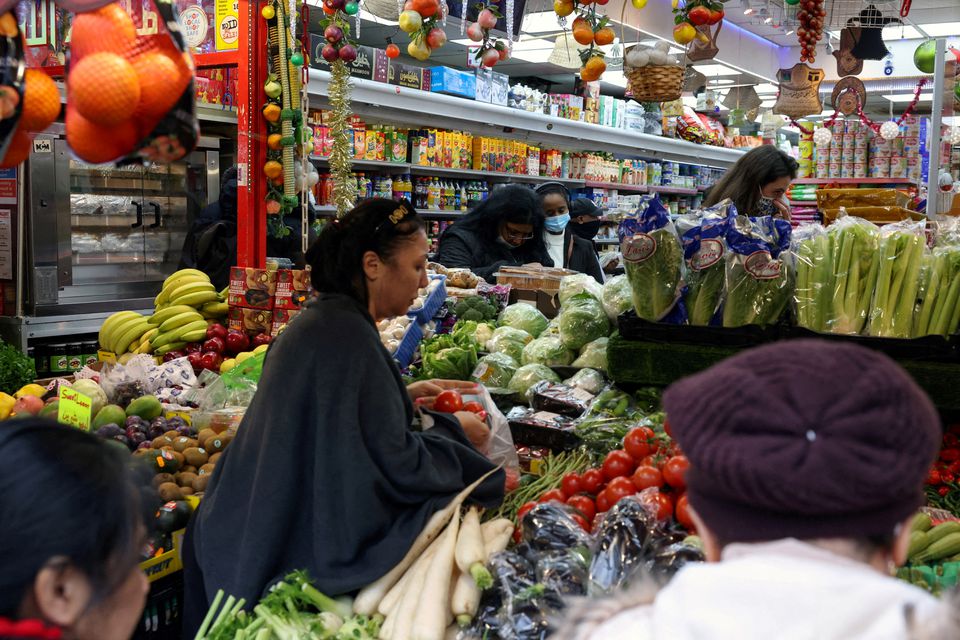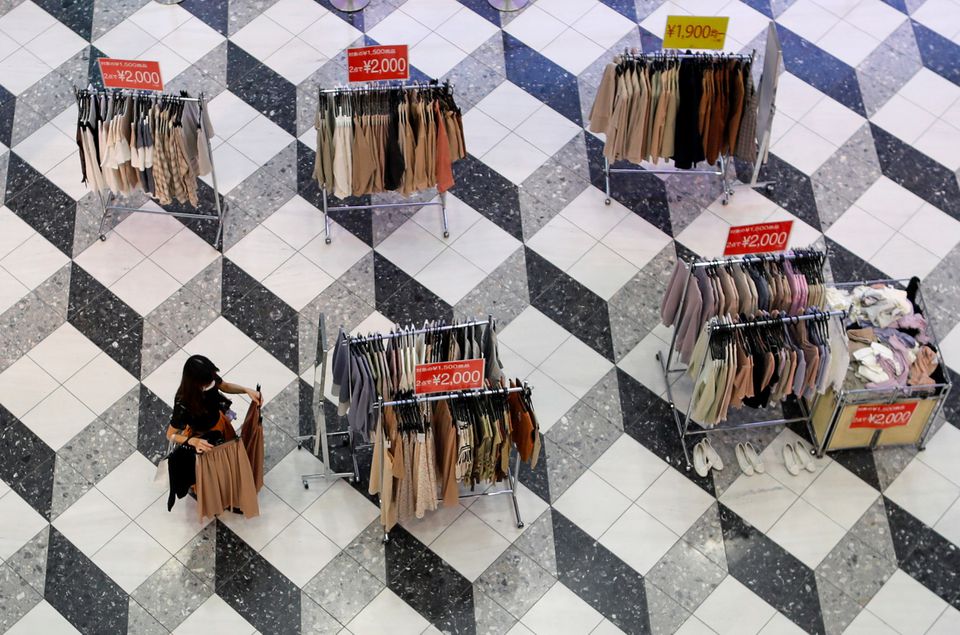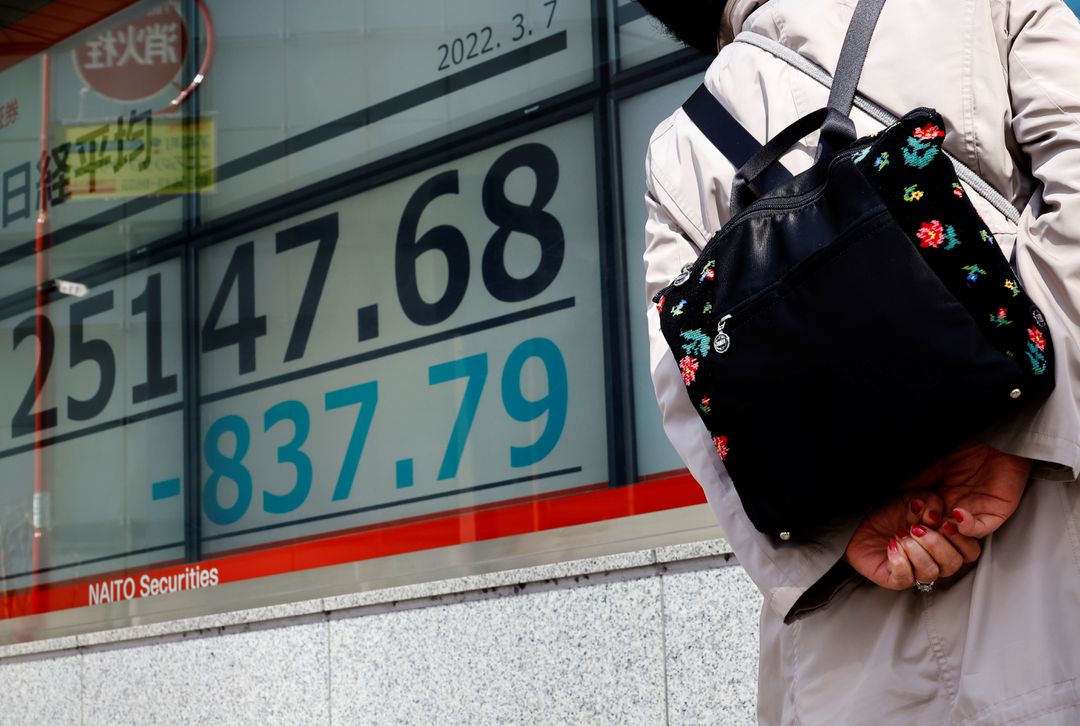WORLDWIDE: HEADLINES
UK Shoppers Cut Spending As Inflation Squeeze Tightens

British shoppers, feeling the hit from surging inflation, cut their spending for the first time since early 2021 when the country was under a coronavirus lockdown, according to a survey published on Tuesday.
The British Retail Consortium (BRC) said total retail spending among its members – mostly large chains and supermarkets – was 0.3% lower than a year earlier, compared with 3.1% annual growth in March.
“The rising cost of living has crushed consumer confidence and put the brakes on consumer spending,” BRC chief executive Helen Dickinson said.
The annual fall in spending was the first since January 2021. The figures are not adjusted for inflation, so the fall in the volume of goods purchased will have been much greater than the drop in money spent.
A 13% leap in global food prices between March and April, pushed up by the war in Ukraine, spelt more trouble ahead for retailers who would be unable to absorb all the extra costs, Dickinson said.
Britain’s consumer prices rose by 7.0% in the 12 months to March – a 30-year high – and the Bank of England said last week that inflation was likely to peak at more than 10% later this year, causing a sharp economic slowdown or possibly a recession.
An increase in payroll taxes for both employers and workers also took effect in April.
Full coverage: REUTERS
Japan Household Spending Beats Expectations, But Inflation Risks Loom

Japan’s household spending fell in March for the first time in three months, though the 2.3% drop was smaller than expected, as consumers remained cautious despite some easing of COVID-19 curbs.
While lower coronavirus risks have boosted consumer activity since April, rising living costs may cramp Japan’s consumption-led recovery for the rest of 2022, analysts say. Inflation is at a multi-year-high in the world’s third-biggest economy, fanned by war in Ukraine and the yen’s skid to 20-year-lows.
Government data on Tuesday confirmed the March spending drop versus the same month a year earlier. The decrease was narrower than Reuters’ median market estimate for a 2.8% drop, and followed 1.1% growth in February.
The first fall since December was also partly due to a tough comparison with March 2021, when spending surged 6.5%, a government official told a media briefing. Some items like mobile devices, cars and takeaway foods saw robust demand, the official said.
Service spending on dining and travel agencies also slightly increased year-on-year, he said.
Meanwhile, spending on fresh foods and home appliances decreased from a year earlier, and consumption still remained below pre-pandemic levels in March, according to the data.
Household spending in the January-March quarter was down 1.8% from the previous quarter, the data showed, as curbs to combat the Omicron COVID variant lasted until late March.
Full coverage: REUTERS
WORLDWIDE: FINANCE/BUSINESS
Asian Stocks Hit 2-year Low On Rate Hike Worries

Asian shares tumbled to their lowest in nearly two years on Tuesday as investors shed riskier assets on worries about higher interest rates and their impact on economic growth, while the dollar held near 20-year highs.
MSCI’s broadest index of Asia-Pacific shares outside Japan (.MIAPJ0000PUS) was down 0.8%, falling for a seventh straight session and extending declines to 17% so far this year.
Across Asia, share indexes were a sea of red. The Nikkei (.N225) lost 0.9%, Australian shares (.AXJO) shed 2.5% and Korean stocks (.KS11) lost 2%.
S&P 500 stock futures and Dow Jones futures both fell 0.5% and Nasdaq futures were down 0.6%.
“The idea of a benign and gentle tightening cycle has evaporated,” ANZ analysts said in a report.
Full coverage: REUTERS
Commodity Currencies Hit By Tumbling Oil prices, Bitcoin Near 10-month Low

Falling commodity prices dragged the Australian and Canadian currencies lower on Tuesday, although the dollar was steady against most other majors while bitcoin continued to tumble.
The Aussie dollar dropped as low as $0.6920, its weakest since July 2020, having fallen 1.7% overnight, which analysts at CBA attributed to declines in global asset prices.
“The backdrop of heightened financial market volatility suggests AUD can potentially fall further against the USD and other major crosses in the near term,” they added.
Global share markets took a battering on Monday with the Nasdaq dropping more than 4% in a sell-off led by mega-cap growth stocks. Meanwhile, oil prices fell around 6%, extending declines on Tuesday as coronavirus lockdowns in China, the top oil importer, fed worries about demand.
Lower oil prices also hurt the Canadian dollar, which touched C$1.3037 per dollar, its weakest since November 2020 and the Norwegian crown touched 9.7184 per dollar, its lowest since June 2020.
The dollar index was steady at 103.7 on Tuesday morning, having risen as high as 104.19 overnight, a fresh 20-year peak. It later lost some ground after Atlanta Fed President Raphael Bostic hosed down talk of a 75-basis points at the Fed’s next meeting.
Full coverage: REUTERS
Oil Tumbles On Global Economic Worries, Strong Dollar

Oil prices tumbling more than 1% on Tuesday, extending the previous day’s steep declines as coronavirus lockdowns in top oil importer China, a strong dollar and growing recession risks fed worries about the outlook for global demand.
Brent crude fell $1.31, or 1.2%, to $104.63 at 0216 GMT after slipping to as low as $103.19.
U.S. West Texas Intermediate crude fell $1.25, or 1.2%, to $101.84 a barrel after hitting an intraday low of $100.44.
On Monday, both benchmarks posted their biggest daily percentage fall since March, dropping by 5% to 6% since March.
The fall in oil prices reflected trends in global financial markets as investors shed riskier assets on worries about higher interest rates and their impact on economic growth.
The dollar held near 20-year highs, making oil more expensive for holders of other currencies.
“China’s COVID situation, rising rates and growing recession risks are not helping risk assets,” Warren Patterson, head of ING commodities research said.
Latest data showed China’s export growth had slowed to single digits, the weakest in almost two years, as the country extended lockdowns to curb the spread of COVID-19.
Full coverage: REUTERS
